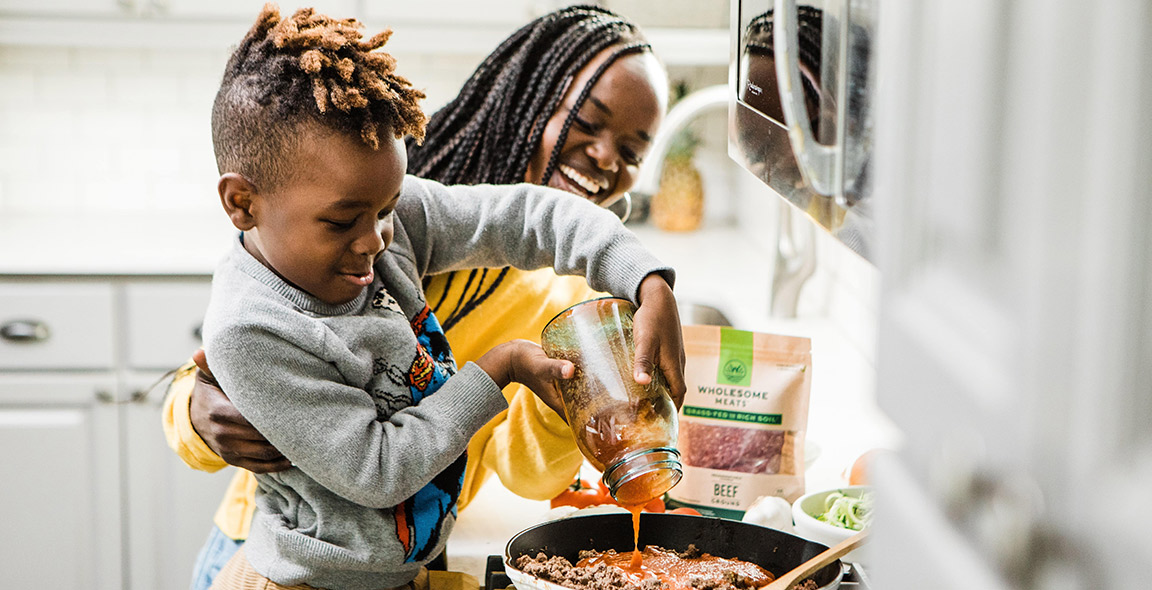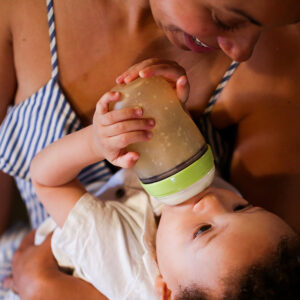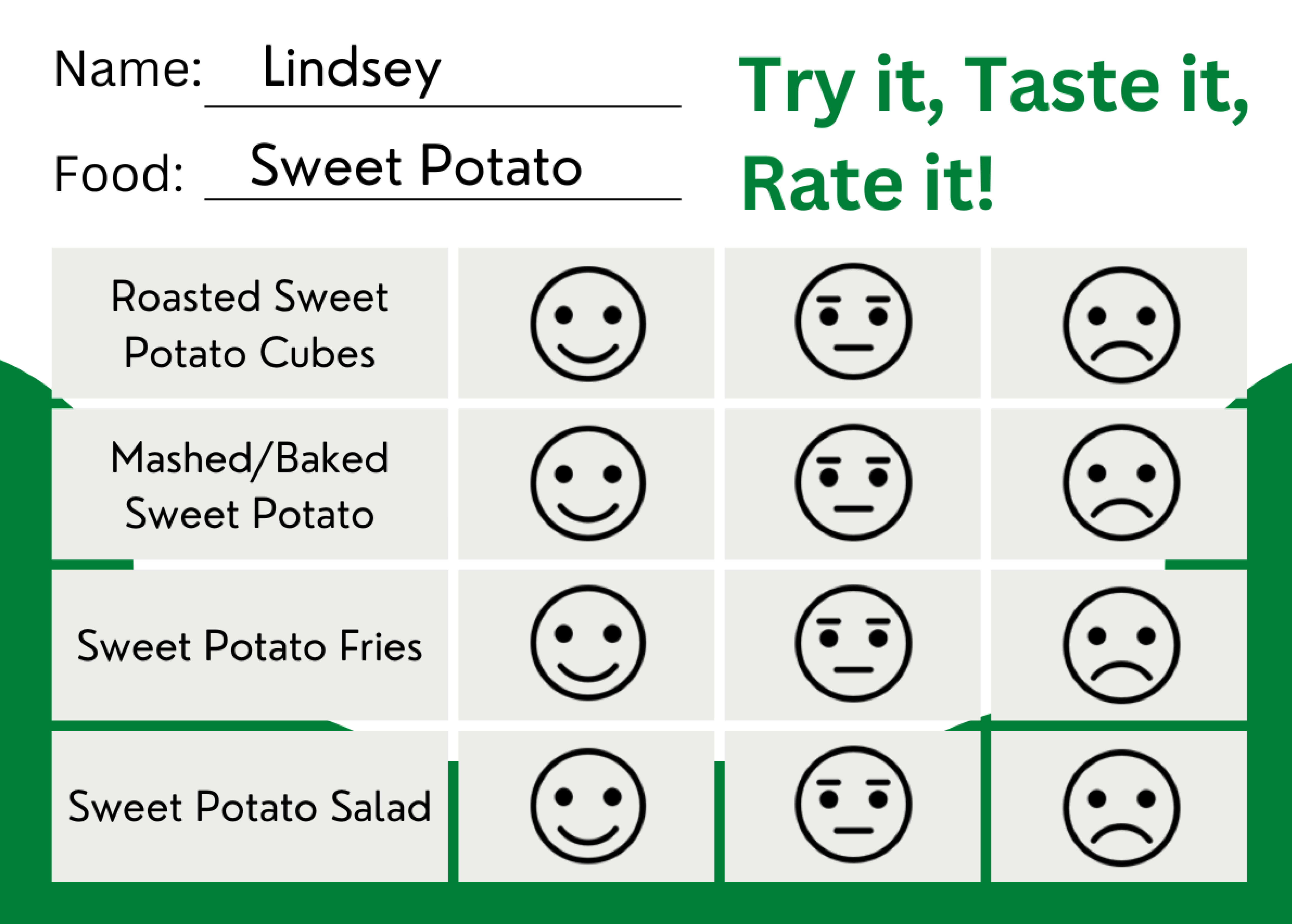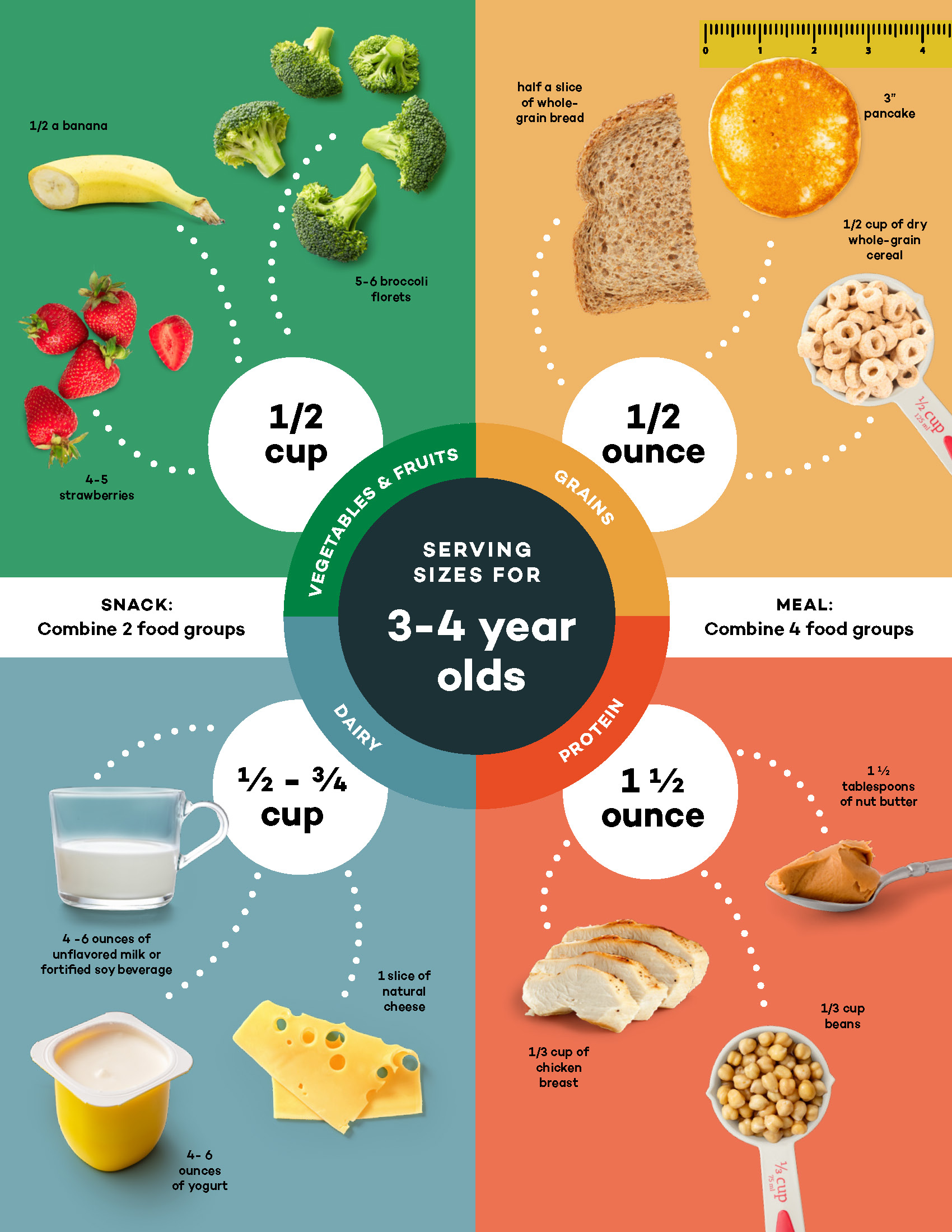
Childhood is a critical period for the development of eating behaviors and habits that last into adulthood. These habits play a vital role in growth, development, overall health, and the prevention of obesity and other lifelong, diet-related chronic diseases.
Emerging research shows that it’s not just WHAT we feed our kids that matters, but also HOW we handle feeding or eating that’s really important in establishing lifelong healthy habits for our kids.
Creating Healthy Eating Habits for Kids 2-8
The single most effective strategy to get kids to eat healthy food is repeated exposure. Kids may need to try something 10-15 times before knowing if they like it or not!
Here are some tips to help encourage your kids to try new foods:
- Pair a new food with familiar flavors. Sometimes offering new foods, like veggies, with well-liked dips or dressings or seasoning them in a familiar way will encourage kids to try new foods and may even help with acceptance.
- Start small. Even providing just a few small bites of a new food may be enough to get kids to like new foods while limiting wasted food.
- Get kids involved and make meal time fun! Engaging kids in the meal prep process provides opportunities for little ones to touch, smell, and explore new foods. Improving familiarity and comfort with new foods can be an important step before tasting.
DON’T:
- Pressure children to eat. Instead, encourage them to try new foods through the tips above!
- Use food as a reward or to soothe emotions. Instead use non-food rewards. Offering food as an emotional tool or reward can set kids up to use food as an emotional support later.
Download the tip sheet for more!
Where Do I Go from Here? Answers to Your Kids’ Most Common Feeding and Eating Challenges
Structure food environments in ways that provide children with abundant opportunities to learn about and have positive experiences with new foods.
Here are some tips that can help set your family up for healthy eating success through structure and routine:
- Create routines around eating as much as your family’s schedule allows and involve kids in implementing these routines.
- Enjoy meals as a family whenever possible.
- Maintain a meal and snack routine to limit snacking all day long.
- Make healthy foods and drinks available to children throughout the day.
- Keep healthy foods out on the counter where they are easily seen and within reach.
- Always start snack and mealtime by offering water and healthy food first.
- Limit the number of unhealthy sweets and snacks in the house.
- Provide guidance that supports healthy choices.
- Let your children see you make healthy choices for meals and snacks.
- Avoid pressuring kids to finish everything on their plate at mealtimes.
Download the tip sheet for more!
Where Do I Go from Here? Answers to Your Kids’ Most Common Feeding and Eating Challenges
Support children’s independence in learning to accept healthy foods by giving them options and finding ways for them to participate.
Here are some tips that can help you give your kids autonomy, in turn, helping you raise healthy, independent eaters:
- Get kids involved.
- Before meal prep, let kids choose which vegetable to try based on what’s available at home.
- Let your child help with food prep. Even the youngest can help by washing and sorting foods.
- Have conversations about new foods. Ask kids what they think about foods tried (for example, “Is it thumbs up, thumbs down, or in-between?”) and honor their answers.
- Make healthy choices easy for kids by keeping healthy foods in sight, in reach, and easy to eat.
- Keep cut vegetables in the refrigerator or fresh fruit on the counter for a quick snack.
- Portion healthy snacks into individual-serving size containers and leave them in a basket on the bottom shelf of the pantry (at kids’ eye-level).
- Help kids learn to identify and listen to their hunger or fullness cues.
- Talk to kids about how their stomach feels before, during, and after eating.
Download the tip sheet for more!
Where Do I Go from Here? Answers to Your Kids’ Most Common Feeding and Eating Challenges
Try these activities in your classroom to encourage kids to try and taste new foods.
Try it, Taste it, Rate it!
Select a “focus” food you would like to introduce to the class over a 2 to 3-week period. Write the focus food on the top of each sheet, then prepare and serve the food in several different ways. With each taste, the child can color in the emoji that best matches their reaction to the food.
Download the Try it, Taste it, Rate it! activity
Classroom Taste Tally Chart
Identify several foods to be served in the child care center over the week that will be new to most of the children in the class. Give one tally each time a student tries one of the new foods. The goal for this activity is focused on the total tallies (tries) in the whole class for each food, but you could also add total new tries across all foods for each student. Set rewards for the amount of tallies or tries.
What and How Much to Feed Your 2- to 8-Year-Old
Young kids have small bellies and generally need smaller servings to meet dietary recommendations. Help your child learn to eat the right amount by offering kid-appropriate portions at meal and snack time.
Toddlers need a variety of fruits, vegetables, grains, protein, and dairy (or fortified soy alternatives) every day. This is a great time to experiment with different flavors, colors, and textures!
What to feed your toddler in a day:
- Vegetables: 4 to 8 servings (one serving is ¼ cup)
- Fruits: 4 to 6 servings (one serving is ¼ cup)
- Grains: 3 to 6 servings (one serving is ½ oz equivalent)
- Half of these should be whole grains, like whole wheat bread or brown rice
- Dairy: 4 to 5 servings (one serving is ½ cup)
- Protein: 2 to 5 servings (one serving is 1 oz equivalent)
What to limit:
- Foods and drinks with added sugars, like cookies and fruit drinks
- Foods high in saturated fat and sodium, like French fries and boxed mac and cheese
Offer multiple food groups:
- Snacks should include items from 2 of the food groups (e.g., fruit and dairy).
- Meals should include items from 3 or more food groups (e.g., protein, grains, vegetables).
It’s important to keep in mind that your child might not eat the exact amounts suggested at every meal, or even every day. THAT’S OKAY! Just remember to keep offering a variety of healthy foods and drinks at all meal and snack times, and things will balance out over the course of the week.
Download the Portion Size Guide, for more info on age-appropriate serving sizes.
Preschoolers should eat a variety of fruits, vegetables, grains, protein, and dairy (or fortified soy alternatives) every day. Reluctance to try new foods is common at this age – check out our tips above for creating healthy, independent eaters!
What to feed your preschooler in a day:
- Vegetables: 3 to 4 servings (one serving is ½ cup)
- Fruits: 2 to 3 servings (one serving is ½ cup)
- Grains: 3 to 6 servings (one serving is ½ oz equivalent)
- Half of these should be whole grains, like whole wheat bread or brown rice
- Dairy: 3 to 5 servings (one serving is ½ to ¾ cup)
- Protein: 3 to 5 servings (one serving is 1 oz equivalent)
What to limit:
- Foods and drinks with added sugars
- Foods high in saturated fat and sodium
Offer multiple food groups:
- Snacks should include items from 2 of the food groups (e.g., fruit and dairy).
- Meals should include items from 3 or more food groups (e.g., protein, grains, vegetables).
It’s important to keep in mind that your child might not eat the exact amounts suggested at every meal, or even every day. THAT’S OKAY! Just remember to keep offering a variety of healthy foods and drinks at all meal and snack times, and things will balance out over the course of the week.
Download the Portion Size Guide, for more info on age-appropriate serving sizes.
Kids in elementary school are ready to learn more about healthy eating and ways they can take charge of what they eat and drink. But offering a variety of healthy choices is still needed by parents! Check out our tips above for raising healthy, independent eaters and how to set your home up for healthy eating success.
What to feed your elementary school-age child in a day:
- Vegetables: 2 to 4 servings (one serving is ¾ cup)
- Fruits: 2 to 3 servings (one serving is ¾ cup)
- Grains: 2 to 3 servings (one serving is 1 oz equivalent)
- Half of these should be whole grains, like whole wheat bread or brown rice
- Dairy: 3 servings (one serving is ¾ to 1 cup)
- Protein: 2 to 3 servings (one serving is 2 oz equivalent)
What to limit:
- Foods and drinks with added sugars
- Foods high in saturated fat and sodium
Offer multiple food groups:
- Snacks should include items from 2 of the food groups (e.g., fruit and dairy).
- Meals should include 3 or more food groups (e.g., protein, grains, vegetables).
It’s important to keep in mind that your child might not eat the exact amounts suggested at every meal, or even every day. THAT’S OKAY! Just remember to keep offering a variety of healthy foods and drinks at all meals and snacks and things will balance out over the course of the week.
Download the Portion Size Guide, for more info on age-appropriate serving sizes.
Access the Full Report
Dig into the Research for the 2-8 Feeding Recommendations
Read the Report
Ages 0-2 Feeding Recommendations
Getting your child off to a healthy start sets them up for a healthy life. Click an age to learn what and how to feed your baby, from birth to 24 months.

Ages 5-17 Beverage Recommendations
Click an age range to learn how to stay healthy with the right drinks, in the right amounts, at the right ages, from age 5 to Adult.

Ages 0-5 Beverage Recommendations
Visit HealthyDrinksHealthyKids.org to learn more about beverage recommendations for 0-5 year-olds and to access additional resources. Learn More at Healthy Drinks Healthy Kids



